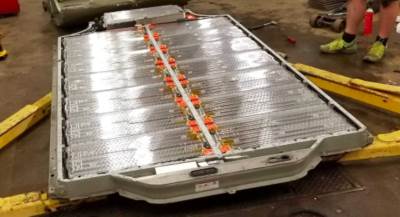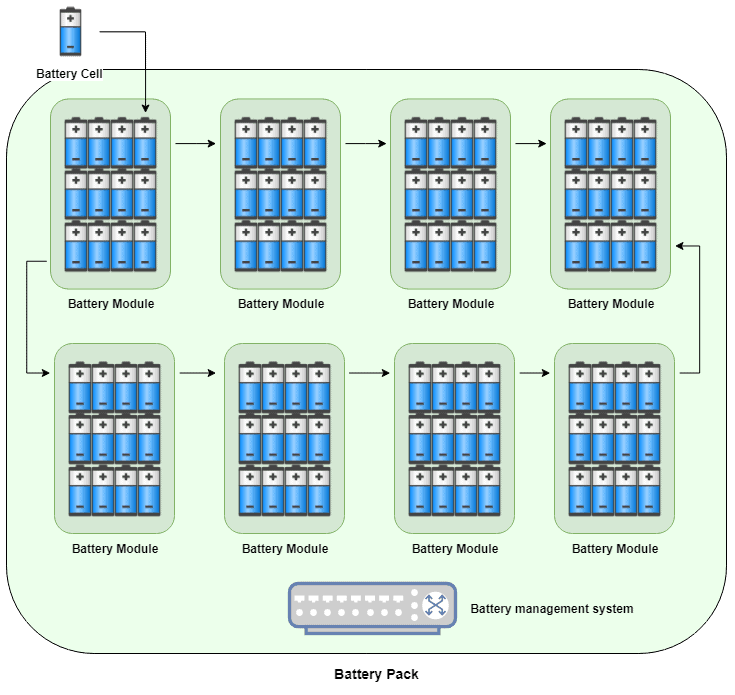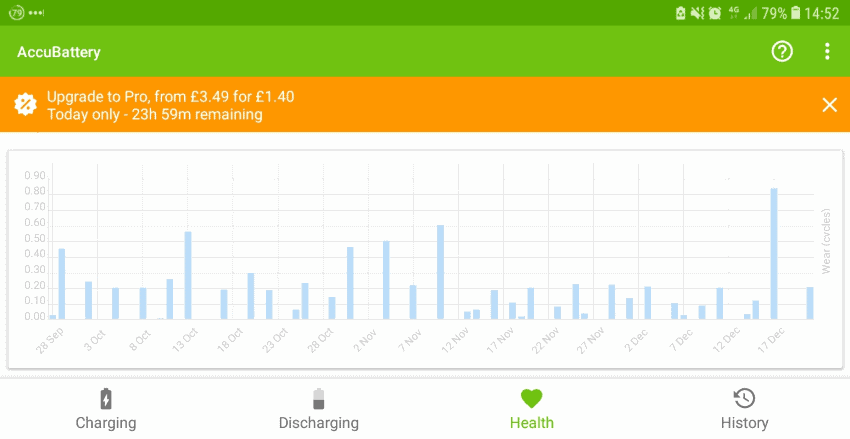Mobile phone batteries are rubbish after 2 years, and laptop batteries need changing every 4-5 years. So are electric car batteries any better? After all, the cost of replacing the battery in a Nissan Leaf can be $5,000 or more, and the cost of replacing a Tesla battery (outside of the 8 year battery warranty) is into the five figures. Hence we have written this guide to see whether you need to be concerned about the batteries of electric cars.
The (Simple) Science
Lets start by talking about the science behind electric car batteries for a second. But don’t worry, we’ll be brief and not get too technical!
There are different types of electric vehicle batteries, although the most common form by now (and the one which is the standard nowadays) are lithium-ion batteries (LIBs) – the same as in mobile phones and laptops, albeit ones with much larger capacity (and cost!)

LIBs are rechargeable and contain lithium based atoms with a non-zero electric charge (ions). A fully charged LIB will have ‘lots’ of negative ions stored, which ‘move’ to the positive electrode when they’re discharged (used). Then they move back when charged. In other words, a lithium-ion based battery simply involves atoms moving from ‘charged’ to ‘used’ positions within the battery. Unlike other forms of batteries, LIBs are quite efficient at being charged and discharged without becoming too inefficient too quickly.
A variation on LIBs are lithium-ion polymer batteries (LiPo) which are similar LIBs but which use a polymer based electrolyte (instead of a liquid based one). They’re more robust and flexible, and have a slightly lower chance of leaking electrolytes, but are more expensive and potentially have a lower capacity/range.
Battery capacity
LIB batteries in mobiles and laptops are advertised in mAh which measures electrical power over time. A Samsung Galaxy S8 has a 3000 mAh battery, for example.
However electric car batteries naturally need to be a lot bigger and the voltage they run at varies, so giving their capacity in mAh doesn’t make as much sense. Hence they’re advertised as kWh instead. For example, a Tesla Model S might have a 60 kWh LiPo battery.
If we really wanted to compare the two, though, we can convert the Wh to Ah by dividing by the voltage. A Tesla Model S runs at 375 volts, giving a 160,000 mAh figure from the 60 kWh battery: 53x times bigger than the mobile phone!
An electric car battery is essentially just a very big version of a mobile phone battery – but instead of manufacturing a single, massive battery, lots of individual batteries (called battery cells) are grouped together into vibration-free structures called battery modules. These modules are then collectively housed in a larger battery pack, which ends up looking something like:

As can be seen, a direct comparison between a mobile phone battery and an EV battery is a little tricky (because an EV battery contains dozens or even hundreds of smaller batteries), which is why electric cars tend to advertise their effective range instead. For example, the Hyundai Ioniq’s advertised range is 124 miles (200 kilometers).
This allows potential buyers to make a much more informed decision (on whether the car battery is good enough for them). After all, if your commute is 100 miles daily, it’s clear that the Ioniq’s range wouldn’t be sufficient for you because you would need to visit a charging station every day. Whereas if you’d only be doing 15 miles per day, it’d be fine for you as you would only need to charge once per week (maybe whilst doing the weekly shop?!)
But if someone told you the mAh is 100,000 or the LiPo is 28 kWh, you’d probably be (rightly) confused about what this means and walk away! So our advice, when considering electric car battery capacity, is to ignore everything but the effective range.
Average electric car battery lifetime
Depending on how you treat your battery (i.e. how you use your car, how you charge the battery – more below), car manufacturers are fairly confident that you should get good enough use for 7-8+ years.
After all, Nissan Leaf offer a battery warranty of 5 or 8 years (depending on the battery you buy), Tesla’s is also 8 years and the Chevrolet Volt has a 10 year warranty.
So you should be fairly safe when buying an electric car brand new, or even a well-treated used one which is only 2-3 years old. However you should start to be sceptical of used electric cars which are 5 or more years old: maybe they’re being sold because their battery’s range and capacity is reduced to a point where the car is too inconvenient.
The other caveat to mention is that the battery warranties naturally do not mean that your battery will be kept at 100% health. LIB/LiPo batteries do degrade (despite being better than older style batteries), and the warranties reflect this: they only cover you beyond a certain amount of capacity/cell loss.
Typical cost to repair or replace car battery
A Nissan Leaf battery replacement is around $5,000 in the US (£5,000 in the UK), whilst a Tesla battery replacement runs into the five figures. A Volt replacement is similar to the Leaf’s price, too: $4,500-$5,500.

However Nissan have recently unveiled a new scheme, to replace your battery with a refabricated one at a cost of around $2,850. This is a good solution for people whose Leaf’s batteries have lost 30-40%+ capacity but who don’t want to stump up $5,000 on a brand new battery.
Finally, you won’t always have to replace the entire battery. It might be that only certain battery cells or modules have failed, and a repair for this could be as low as $500. But naturally, the cost will vary a lot depending on the exact issue and also the technology and expertise of the garage/dealer you go to.
Tips for preserving the battery life
Whilst there’s some debate, we’d agree that the ‘80-20’ rule is worth following for any lithium based battery. This is where you try not to regularly charge it about 80% (as the battery heats up too much when charging over 80%), and don’t leave the capacity drop below 20% (as this stresses the battery).
This is because LIBs/LiPos have a certain number of full charging cycles available, before they become less and less efficient. Mobile phone batteries typically have 500-750 cycles, which is why people who charge their mobile to full (100%) every night see their battery becoming rubbish after around 2 years (aka potentially 730 full cycles if the phone is discharged – ‘used’ – a lot throughout the day).
Some studies show that charging from 100% to 0% constantly leads to just 500 effective cycles, compared to 3,500 effective cycles when following the 80-20 rule: 7x more! To help demonstrate this, take a look at the below AccuBattery data from a Lithium-ion battery cell (from a mobile phone, but this is essentially the same as the individual cells from an EV battery pack):

This graph shows how worn (or stressed) the battery got when being charged. The big bar towards the right which shows 0.85 wear cycles was when the battery got charged from 10% to 90%. Some of the smaller wear cycles of 0.4-0.5 were charging from around 20% to 90%, whilst the majority of the wear cycles are 0.1-0.2 and this was with charging from 20% to 80%.
In other words, the recommended approach for charging from 20% to 80% led to quite low wear cycles (stress) on the battery, whereas deviating from this even slightly (i.e. charging an extra 10% above 80%) leads to increasing amounts of wear. Due to how lithium-ion batteries work, the same is completely true for your electric car battery too
Having said all this, don’t worry if you do leave the charge drop below 20% or you charge above 80% from time to time. If you have a long journey to make and there are not as many EVSE charging points as you would like along the way, charging up to 100% before you leave is definitely prudent.
2019 EV Model Effective Range
The table below shows the effective range from a few different 2019 electric cars, which we feel is worth including because some amazing battery technology (hence range) gains have been made in recent years – remember that some 2010-2018 EVs had sub-100 ranges:
| Car | Effective Range (miles) | Effective Range (km) |
|---|---|---|
| 2019 Nissan Leaf | 151 | 243 |
| 2019 Nissan Leaf Plus | 226 | 364 |
| 2019 Hyundai Kona EV | 258 | 415 |
| 2019 Tesla Model 3 (SR) | 220 | 354 |
| 2019 BMW i3 | 153 | 246 |
This is a lot better than some old models (and we explore such battery capacity – hence effective range – gains in our ‘Rise of Market-Disrupting EVs’ infographic’), and 300-400+ km ranges coupled with increasing number of charging stations is all very positive.
In conclusion: are they good enough?
Short answer: yes!
Longer answer: see the article above, but still yes!
Massive gains have been made over the past decade with lithium-ion based battery lifespans, and even a well-used, 30%-degraded 2017 Nissan Leaf battery could yield a 117 mile (189 km) range. Plus the cost of repairing or replacing electric car batteries is dropping all the time.